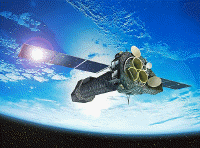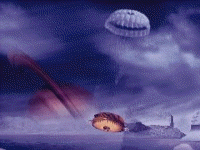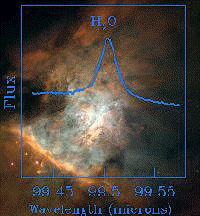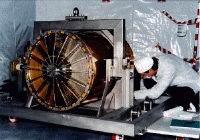Why explore space?
- Why explore space?
- Caring for the Earth
- Discovery and inspiration
- Stimulating industry
- The broadest politics
 Why explore space?
Why explore space?
The European Space Agency's space science programme pools the scientific and engineering skills of 15 countries, for carefully chosen and superbly executed ventures beyond this world. The products are masterpieces of European technology and instrumentation. ESA's satellites and probes brave the hazards of space to win new knowledge and better security for the human species, and to explore new worlds.
| |
|
|
Thanks to ESA and the efforts of scientists and engineers across the continent, Europe now leads the world in several areas of space science. Yet ESA's space science budget is small compared with NASA's. It is equivalent to about 1 Euro per person per year for the combined populations of the ESA member states.
Space science must nevertheless compete with many other deserving uses for public funds. In a democratic continent, the answers to the question "Why explore space?" require frequent repetition. Here are some of the main points that can be made.
 Caring for the Earth
Caring for the Earth
| |
|
|
To look after our planet wisely, we must first know why it is so different from the other planets, in its geology, ocean, atmosphere and life. ESA's deep-space missions to the comets, to Titan and to Mars all seek clues to the peculiar history of the Earth.
The Earth is always at risk from impacts by comets and asteroids, like the catastrophic event that killed off the dinosaurs. ESA contributes to global assessments of this risk by its established leadership in comet research and new attention to asteroids.
| |
|
|
Our planet is enveloped by the wind from the Sun and solar storms can harm our telecommunications, power supplies and computers. Only now, thanks to ESA-led solar-terrestrial missions, are the Sun's effects on the Earth's space environment and its surface weather becoming intelligible.
The distinction between "fundamental" and "useful" research can be illusory. When SOHO investigates the solar atmosphere, it contributes to fundamental astronomy because the Sun is a typical star, but exactly the same investigations enable scientists to understand and predict the solar outbursts that affect the Earth.
 Discovery and inspiration
Discovery and inspiration
Space missions and their results capture the human imagination more vividly than any other branch of the physical sciences. They inspire students to follow careers in science and engineering, and engender an interest in science in the general public.
| |
|
|
Space astronomy contributes powerfully to an emergent picture of where we are in spacetime, in the midst of an evolving Universe, and to the scientific account of how we came to exist. For example ESA's ISO discovered water in many places in the Universe, giving new insight into the origin of the water on which life depends.
If Europe wants universities as good as any in the world, their research opportunities, e.g. in space science, must be of world class. When this is not the case, Europe suffers a brain drain, because the smartest people are always welcome elsewhere.
Europe could decide to drop out of cutting-edge research in astronomy, solar-terrestrial science and planetary science. What it cannot do is to expect its young scientists to pursue those subjects properly without a significant space science programme to serve them.
 Stimulating industry
Stimulating industry
Most of ESA's expenditure on space science goes to industry for the construction of spacecraft. It should be seen, not as a financial penalty for doing space science, but as an investment in the future of Europe's high-tech industries.
The development of scientific spacecraft presents challenges to the aerospace and instruments companies in ESA's member states. By pushing techniques to new limits, it nurtures precisely the engineering skills that should be considered central to Europe's economic and employment policies.
| |
|
|
The industrial payback from ESA's space science programme goes to the various member states in proportion to their contributions. ESA has for 25 years foreshadowed and encouraged the cross-border rationalisation of Europe's aerospace industry, while safeguarding the role of the smaller contributors vis-a-vis the large countries and companies.
Benefits of space science and technology go far beyond the aerospace industry. For example, spin-offs from the development of novel X-ray telescopes for ESA's XMM-Newton include better spectacles for human eyes and X-ray focusing devices for the manufacture of microchips.
 The broadest politics
The broadest politics
ESA's space missions are an advertisement for the new Europe. To use parts contributed by 15 nations, in building spacecraft that routinely exceed their specification, provides a wonderful demonstration of what multinational collaboration can achieve.
The human breakout into space opens a new arena for politics. Without spacecraft to carry the flags of ESA's member states to distant parts of the Solar System, Europe would have no effective voice if others laid claim to the resources of space.
Space could become a new battleground. In ESA the nations of Europe set an example to the world by declaring that they join together to explore space for purely peaceful purposes.
In the end the question for Europe's citizens and political leaders is whether they would wish to sit back and leave space for the Americans, Japanese and Chinese to explore. If not, they must either create their own spacecraft, nation by nation, or more credibly renew their commitment to ESA's multinational space science programme.





